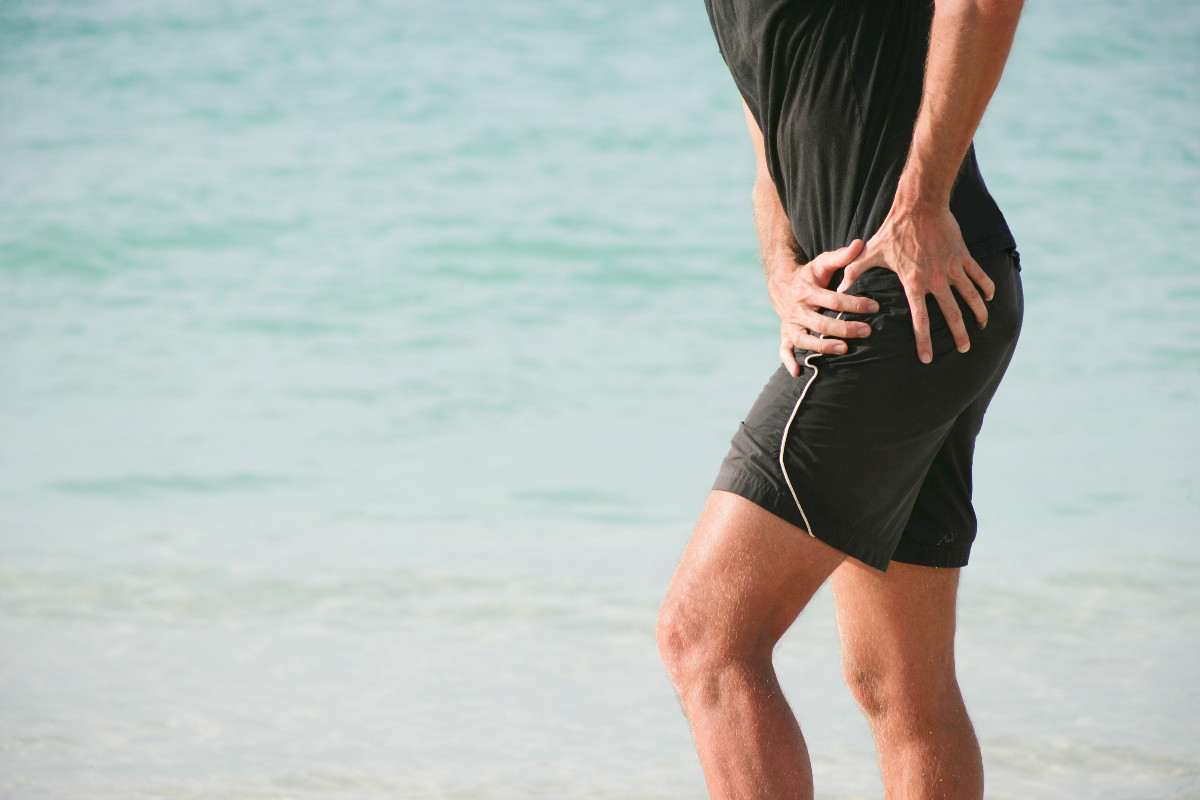By Erick Chen
Causes of hip injuries
Hip pain can result from several different types of injuries. It can be anything from a muscle strain to chronic injuries of the hip joint itself. Muscle strains around the hip joint will have similar symptoms to muscle strains to other parts of the body. Usually after a sudden, fast or high-impact movement you will experience immediate sharp pain. Over a few hours, this will also cause muscle tightness and stiffness to the entire region. Commonly strained muscle groups that affect the hips would include hip flexors, adductors and hamstrings. However, chronic groin pain can sometimes be associated with hip joint injuries. Pain within the hip joint is most often, but not always, experienced in the groin. Pain over the outside of the hip is usually not caused by a hip joint problem, and is more commonly related to hip bursitis or a pinched nerve in the back. Patients with hip problems usually complain of groin pain. This is called "referred pain," and it is due to the organization of nerves in our body.
Types of hip injuries and treatment
One common type of hip joint injury is Femoral Acetabular Impingement (FAI). FAI may affect the hip joint in young and middle-aged adults and occurs when the ball-shaped femoral head rubs abnormally or does not permit a normal range of motion in the acetabular socket. Damage can occur to the articular cartilage or labral cartilage (soft tissue bumper of the socket), or both. FAI-related pain is often felt in the groin, but may also be experienced in the lower back or around the hip. Patients can also feel clicking, grinding or stiffness in the joint. Joint stiffness is often described as needing to “pop the hip to make it feel better.” Patients with FAI will also report discomfort with prolonged hip flexion activities like sitting. Diagnosis is commonly made by testing the range of motion for the hip and can be confirmed with diagnostic imaging. Typically, the first type of intervention would be oral anti-inflammatory medication and physical therapy. The initial goals would be reduce pain and inflammation, followed up by increasing strength of the hip joint and lumbar pelvic stability. In more severe cases of FAI direct steroid injection or surgical intervention will be required to fix the problem.
Another type of hip injury is a labral tear. The labrum is a type of cartilage that surrounds the socket of ball-and-socket joints. A labrum is found in both the shoulder and the hip joint. The labrum forms a ring around the edge of the bony socket of the joint. It helps to provide stability to the joint by deepening the socket, yet unlike bone, it also allows flexibility and motion. There are two general types of hip labral tears: degenerative tears and traumatic injuries. A degenerative tear is a chronic injury that occurs as a result of repetitive use and activity. Degenerative labral tears can be seen in the early stages of hip arthritis. A traumatic hip labral tear is usually an acute injury as a result of a sports injury, fall, or accident. Hip labral tears can be seen in association with episodes of hip dislocation or subluxation. They are commonly associated with sudden, twisting maneuvers that cause immediate pain in the hip. It can be difficult to diagnose. Many of the symptoms are similar to symptoms of a groin strain, snapping hip syndrome, sports hernia or other athletic injuries of the hip joint. Furthermore, just because a tear is seen in the hip labrum on an MRI, it does not mean the tear is necessarily the cause of the pain. As with an impingement injury, common conservative treatment would be oral anti-inflammatory medicines in conjunction with physical therapy, with more invasive treatment being steroid injections and ultimately surgical intervention.
// Erick Chen is an MA and Athletic Trainer at United Family Guangzhou Clinic, 1/F, Annex, PICC Bldg, 301 Guangzhou Dadao Zhong, Yuexiu District, Guangzhou 广州市越秀区广州大道中301号人保大厦南塔副楼首层
(4008 919 191, 24-hour Urgent Care: (020) 8710 6060


















